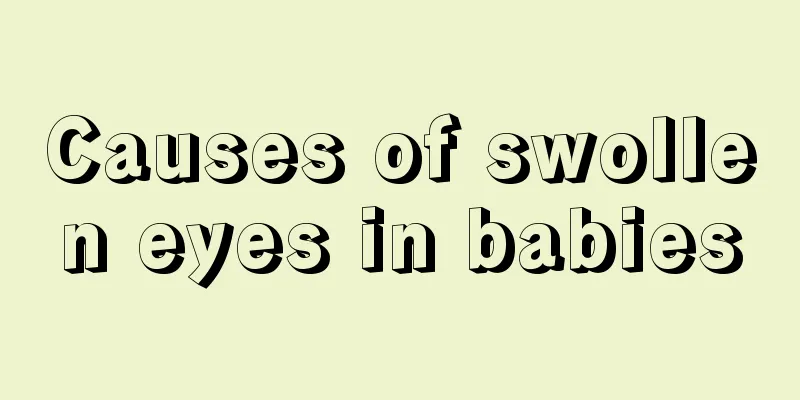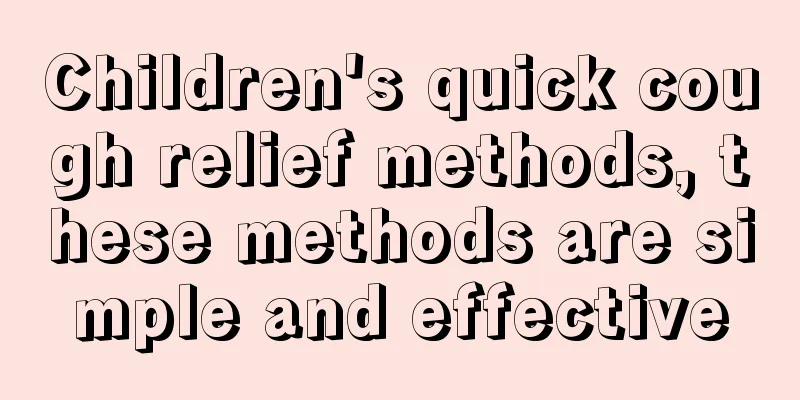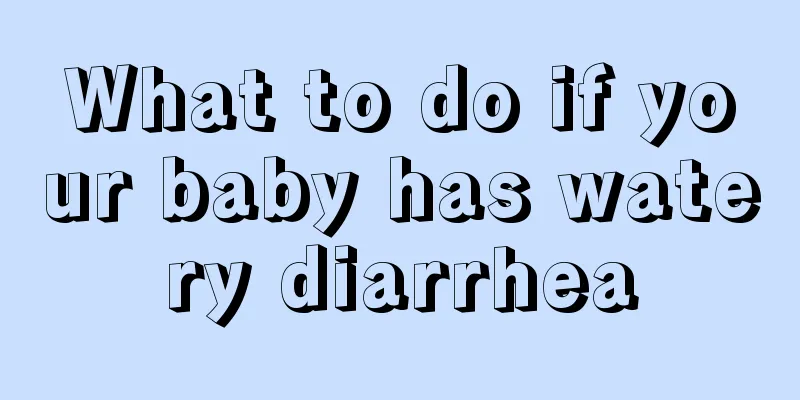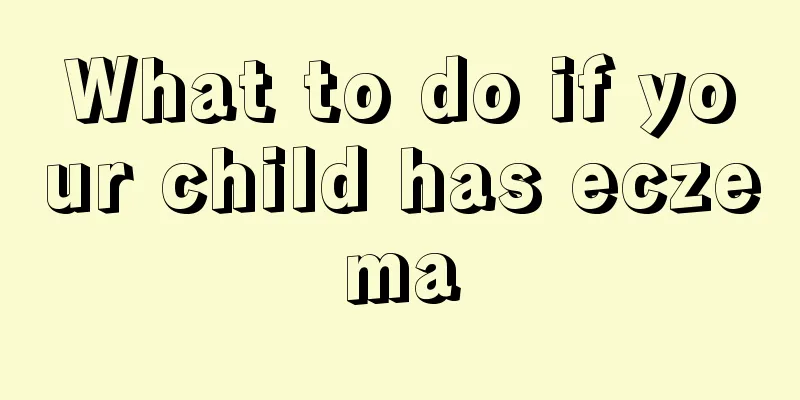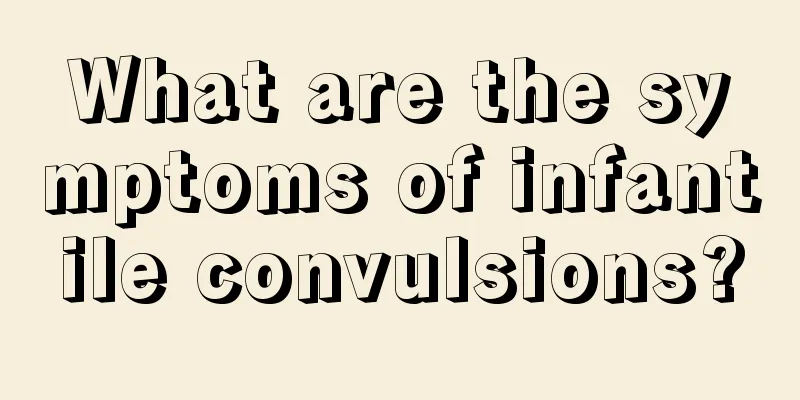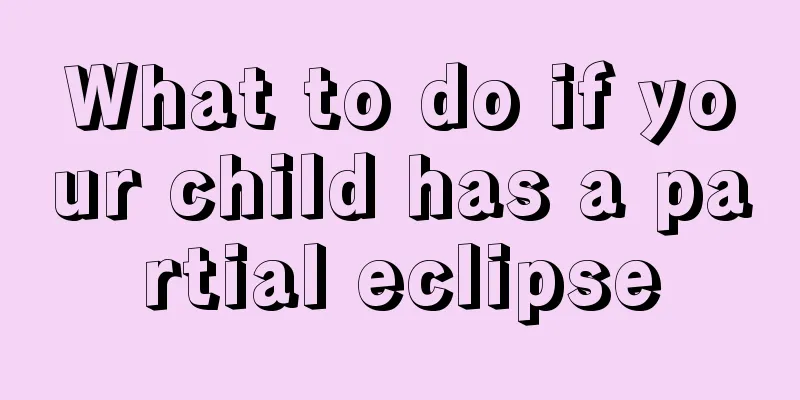What should I do if my baby does not sweat after taking antipyretics?
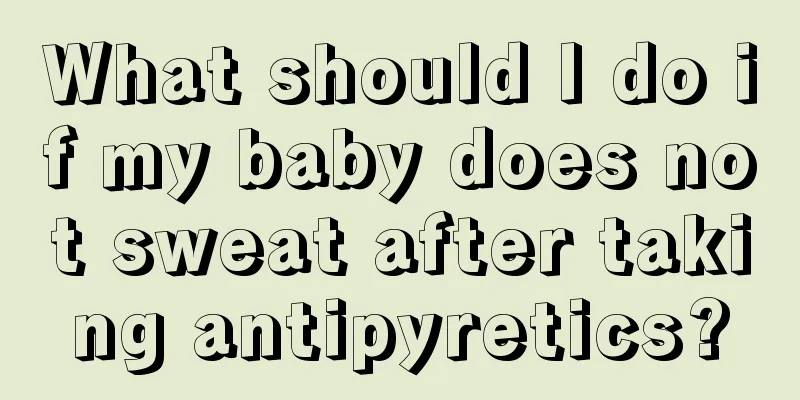
|
Generally speaking, after a baby has a fever and takes antipyretics, he will sweat. This generally means that the drug treatment is effective and the baby's fever will usually go down after sweating. But some babies don’t sweat after eating. What’s going on? What should parents do? The initial symptoms of a child's fever are red face, hot forehead, cold hands and feet, and poor spirits. In addition, there are symptoms of various systems, such as runny nose, sore throat, and cough in respiratory tract infections, abdominal pain, vomiting, and diarrhea in gastroenteritis, and frequent urination, painful urination, and low back pain in urinary tract infections. The accompanying symptoms of various systems in infants are atypical, and may only include anorexia, vomiting, and diarrhea. There are many diseases that cause fever. Parents should pay attention to the pattern of their children's fever and accompanying symptoms, and go to the hospital for examination in time and receive early treatment. The normal body temperature of the human body is 36-37℃, 37-38℃ is a low fever, 38-39℃ is a moderate fever, above 39℃ is a high fever, and above 40℃ is an extremely high fever. Young mothers do not need to panic when they find that their children have a fever. They can take some emergency measures at home in time to relieve the symptoms. Every family should have a thermometer and antipyretics for emergency use. Children with fever should have their temperature measured every 1-2 hours. It is not advisable to use antipyretics when the child's temperature is below 38.5℃; when the temperature exceeds 38.5℃, physical therapy such as cooling patches or ice compresses can be used to reduce the temperature, or an appropriate amount of pediatric cooling tablets can be taken; when the temperature exceeds 39℃, the child should stay in bed, open the quilt or loosen the clothes to expose the skin, place an ice pack or a cold wet towel on the head, and go to the hospital for diagnosis and treatment as soon as possible; in the event of high fever convulsions, the child will have eyes staring or rising, loss of consciousness, unresponsiveness to calls, cyanosis of the lips, face and body, and convulsions of the limbs. Parents should immediately press the child's "Ren Zhong" acupoint (at the midpoint of the nasolabial groove), and continue strong stimulation for 1-3 minutes until the child cries, and then use the above method to quickly reduce the temperature, and also go to the hospital for diagnosis and treatment immediately. Babies under six months old generally do not receive antipyretic injections or take antipyretic medicine when they have a high fever. The best way to reduce the temperature is a warm water sponge bath. Regardless of whether the fever subsides after emergency treatment, the child should be taken to the hospital for treatment. Post-diagnosis precautions After a visit to the hospital, when you return home, there are simple things a mother can do to make her baby more comfortable. Drink more water. Drinking water helps to sweat and dissipate heat, lower body temperature and replenish the water lost by the child's body. Drinking water is not limited to plain water. You can let your child drink some of his or her favorite fruit juice, beverages, etc. to replenish water and vitamins, or drink more soup. When a child is sick and has no appetite, you can let him/her eat some cake, tofu, etc. Pay attention to keeping warm. Insulation does not mean the warmer the better. When your child has a fever, remember not to let him dress in too many clothes or cover him with too thick a quilt. This traditional method of "covering up sweat" is not conducive to dissipating heat and reducing fever. Just let the child wear one more piece of clothing than the normal adult. For example, when the adult wears short sleeves, the child can wear long sleeves. When the adult wears one long skirt, the child can wear two. Take a warm shower. Some mothers worry that giving their children a bath while they have a fever will aggravate the symptoms. After having a fever, you sweat a lot. If you don’t keep clean, it is easy to cause infection by other bacteria, so taking a shower is necessary, but you must use warm water, and the water temperature is best at 38-39℃. Wiping or bathing your child's entire body with warm water can dilate the blood vessels in his or her skin and increase heat dissipation. After taking a shower, wrap your child in a large towel to prevent him from catching a cold. The above is an introduction to what to do when your baby does not sweat after taking antipyretics. When facing such a situation in the baby, the mother should not panic first, but should adjust the treatment method according to the baby's symptoms. |
<<: How long is the treatment period for pneumonia in children?
>>: What are the early symptoms of autism in children?
Recommend
Treatment of nasal adenoid hypertrophy in children
Enlarged nasal adenoids in children is the most t...
What are the symptoms of ADHD?
In reality, some children show symptoms of ADHD, ...
Symptoms of influenza A in children
Influenza A is a relatively common type of influe...
How to treat pimples on baby's legs
The baby's skin is particularly fragile, so i...
What are the staple foods for babies?
We all know that babies are in the stage of physi...
Can a nine-month-old baby drink soy milk?
If there is a baby at home, then the baby's e...
Why does my baby have so much eye mucus in his eyes?
The human body needs to eat something every day. ...
How to treat cough in eight-month-old baby
We all know that babies have poor physical fitnes...
Sun time for babies
We all know that sun exposure helps promote calci...
What are the sequelae of baby's fever and convulsions?
We don’t know much about the sequelae of our baby...
Can Kuding Tea Cure Baby Eczema?
Kuding tea is a natural health tea. Many people d...
Introduction to red tip of baby's tongue
A big reason why the tip of a baby's tongue b...
Reasons why newborns don't sleep at night
In fact, newborns today have not yet fully adapte...
What are the causes of vaginitis in children?
Gynecological diseases can be said to accompany w...
Can children with eczema be vaccinated?
Many parents should know that when children get v...
